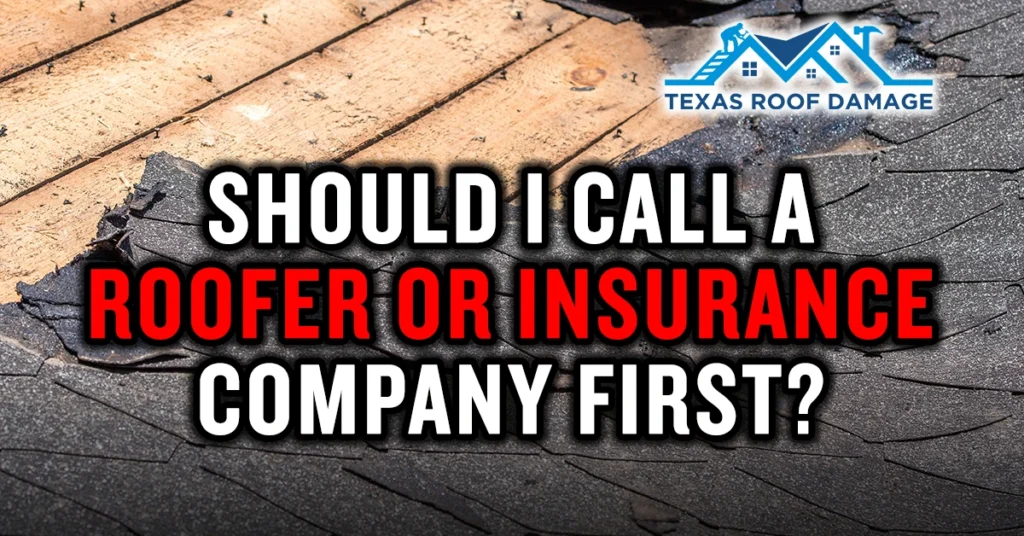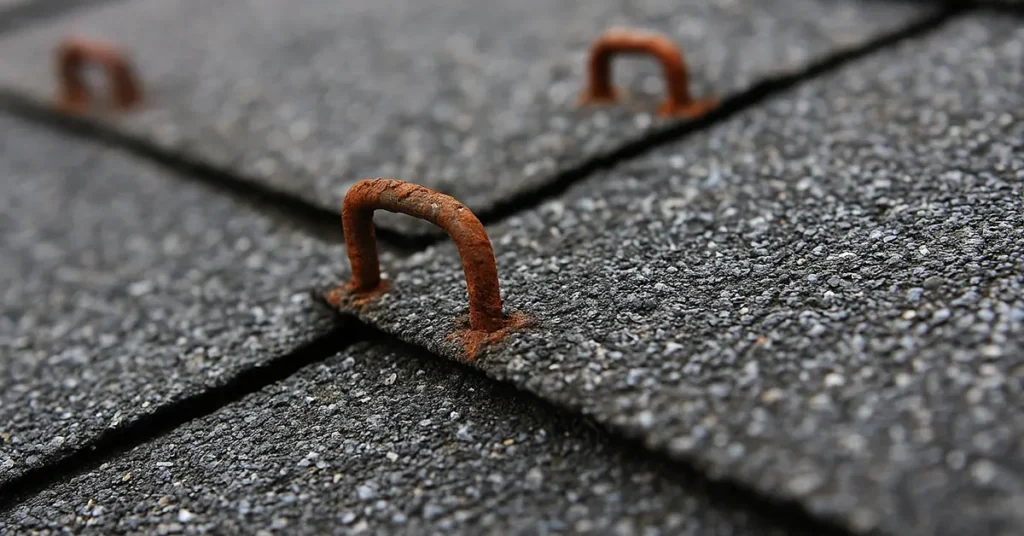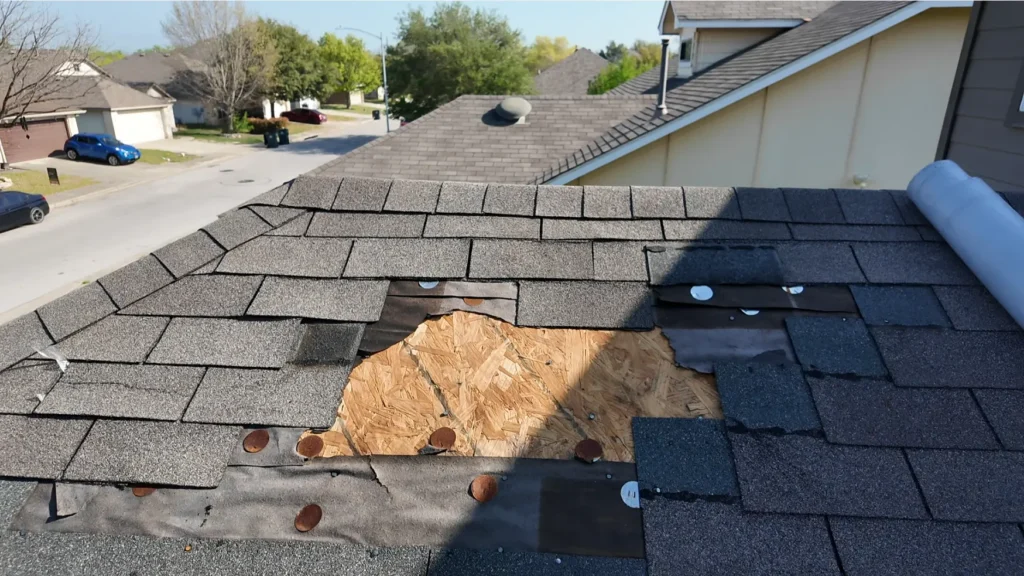When your roof gets damaged, one of the biggest questions homeowners ask is: Should I call a roofer or my insurance company first? Making the wrong decision can cost you time, money, and unnecessary stress. In this guide, we’ll break down everything you need to know so you can make the best decision for your home and finances.
Why Calling a Roofer First Is the Right Choice
Many homeowners believe that the first step after noticing roof damage is to call their insurance company. While this seems logical, it can actually work against you. Here’s why calling a trusted roofing contractor first is the better move:
1. A Roofer Helps You Avoid Unnecessary Insurance Claims
Not all roof damage requires an insurance claim. Many minor repairs cost less than your deductible, meaning you’ll end up paying out-of-pocket anyway. A roofer can inspect the damage and let you know if it’s worth filing a claim.
According to Bill Ragan Roofing, many homeowners file unnecessary claims, which can lead to higher premiums even if their claim is denied.
2. Roofers Provide Professional Documentation for Your Claim
Insurance companies require thorough documentation to approve a roof damage claim. A professional roofer will:
- Take high-quality photos of the damage
- Provide a detailed inspection report
- Assess whether the damage meets the insurance company’s criteria for approval
Without this documentation, your claim could be delayed or denied.
3. Faster Inspections Compared to Insurance Adjusters
After a storm, insurance adjusters get overwhelmed with claims, often taking weeks to visit your home. A roofer, on the other hand, can typically inspect your roof within 24-48 hours.
4. Your Roofer Advocates for You During the Insurance Claim Process
Insurance adjusters work for the insurance company, not for you. A trusted roofing contractor, however, will be your advocate, ensuring you get the full compensation needed to restore your roof.
What Happens If You Call Your Insurance Company First?
If you contact your insurance company first, you might encounter the following problems:
- Claim Denial Without Inspection: If your damage doesn’t meet their threshold, they may deny your claim outright.
- Higher Premiums: Even denied claims can lead to increased rates in some cases.
- Delayed Inspection: Adjusters are often backed up, meaning repairs get pushed back.
- Less Control Over the Process: The insurance company may suggest a contractor that works for them rather than one with your best interests in mind.
When Should You Call Your Insurance Company First?
There are some cases where calling your insurance first might make sense:
- If there is major structural damage to your home (e.g., a tree has fallen through your roof)
- If your policy specifically requires notification before repairs
- If you already have a trusted roofing contractor that your insurer approves of
For more details on Texas roof insurance policies, check out this guide from the Texas Department of Insurance.
Steps to Take After Noticing Roof Damage
If you’ve just noticed damage on your roof, here’s what you should do:
Step 1: Assess the Situation Safely
Before climbing on your roof, check for visible signs of damage from the ground:
- Missing or loose shingles
- Granules in your gutters
- Water stains on ceilings
- Dented vents or flashing
Step 2: Contact a Trusted Local Roofer
Search for a licensed, insured, and reputable roofing contractor in your area. If you’re in Austin, make sure to find a roofer with experience handling storm damage claims.
Here’s what a professional roofer will do:
- Perform a free or low-cost inspection
- Document all damage with photos and reports
- Provide an honest assessment on whether you should file a claim
Step 3: Review Your Insurance Policy
Before filing a claim, it’s a good idea to understand what your homeowner’s insurance policy covers. Some policies have exclusions for older roofs or specific types of damage.
For guidance on identifying roof damage, check out Voss Law Firm’s guide.
Step 4: Decide Whether to File a Claim
After reviewing the roofer’s inspection report and your policy, decide if a claim is necessary.
- If the repair cost is below your deductible: Pay out-of-pocket.
- If the damage is extensive: Proceed with filing a claim.
Step 5: Work with Your Roofer During the Insurance Inspection
Your roofing contractor should be present when the insurance adjuster comes to inspect the damage. This ensures:
- The adjuster doesn’t miss any key damage
- You get the best possible payout
- You understand what’s covered in your policy
Step 6: Get Your Roof Repaired or Replaced
Once the claim is approved, work with your roofer to schedule the repairs. If your claim is denied, your contractor can help you appeal or explore other repair options.
Tips for Homeowners in Austin, TX
If you live in Austin, here are specific tips to protect your home from roof damage:
1. Schedule Regular Roof Inspections
Texas storms can cause gradual damage over time. Schedule inspections twice a year (before and after storm season) to catch problems early.
2. Upgrade to Impact-Resistant Shingles
Hail is common in Texas. Consider using Class 4 impact-resistant shingles to prevent severe damage.
3. Know Your Insurance Policy Details
Every insurance policy is different. Make sure you know:
- Your deductible amount
- Whether cosmetic damage is covered
- Any exclusions for older roofs
4. Keep a Roof Maintenance Checklist
Use our Roof Maintenance Checklist to help track any roof issues throughout the year.
Final Thoughts: Roofer First, Insurance Second
In most cases, the best first step after noticing roof damage is to call a trusted roofing contractor. This helps you avoid unnecessary claims, speeds up the process, and ensures you get maximum compensation if you do file a claim.
If you’re in Austin and need a roof inspection, contact Texas Roof Damage today! Our experts can be at your home within 24 hours to provide a professional assessment.




